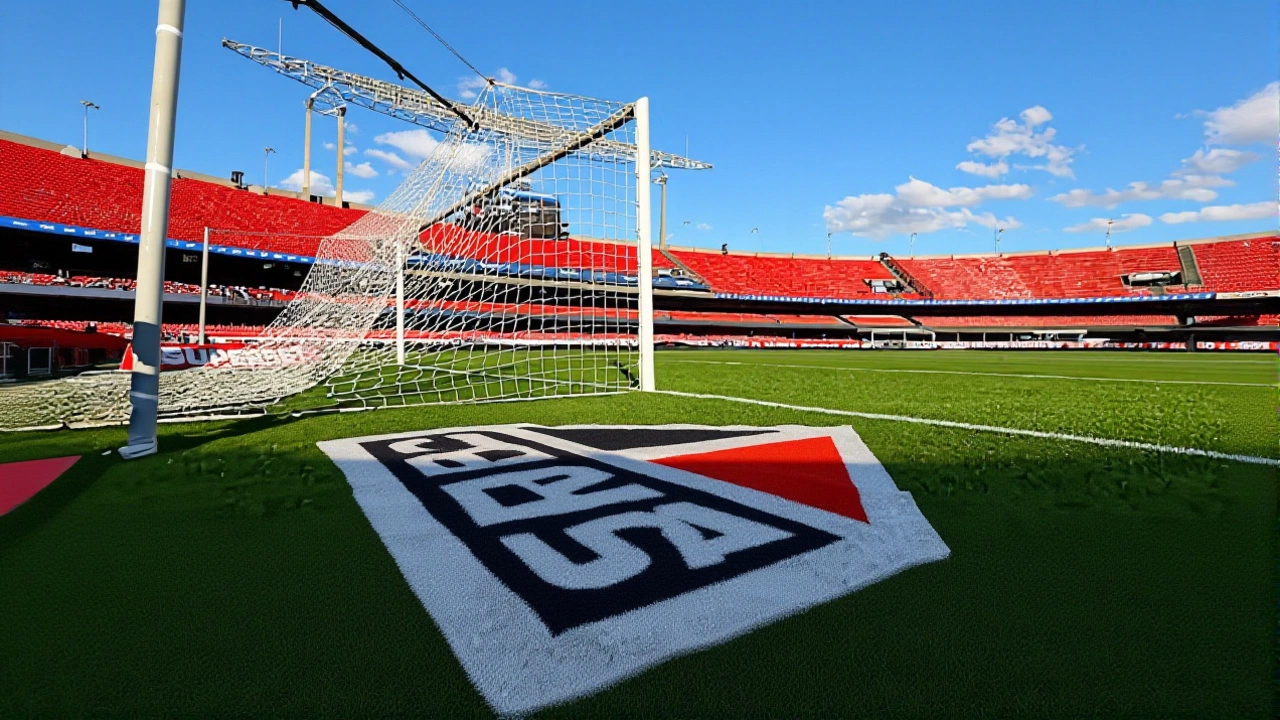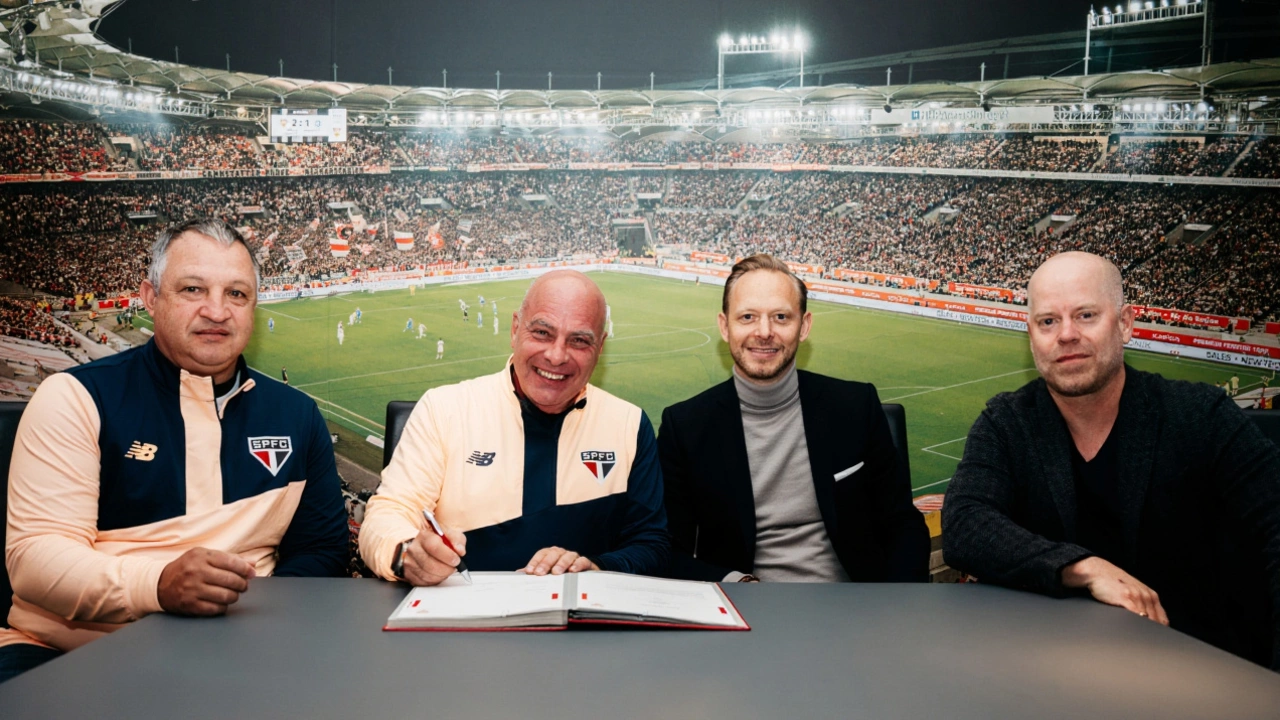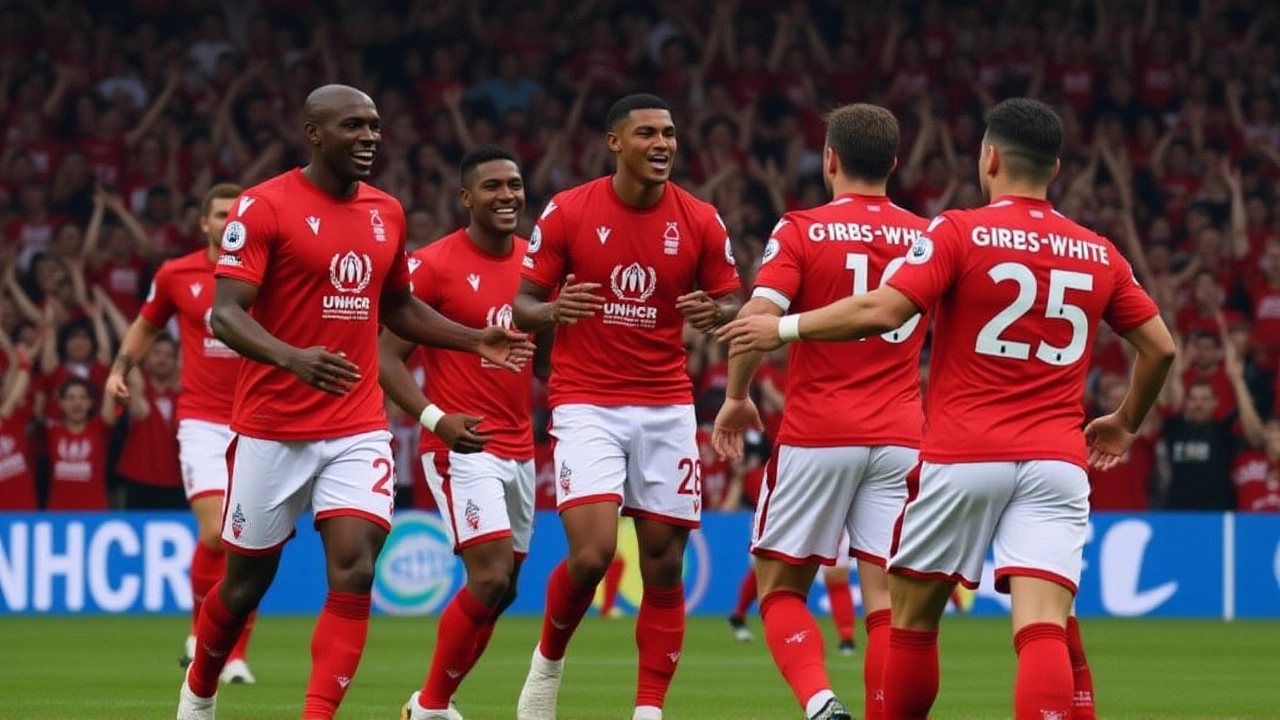When Evangelos Marinakis, owner of Nottingham Forest announced his intent to invest in São Paulo FC, the Brazilian giant, the football world took notice. The Greek shipping magnate – already at the helm of Olympiacos in Greece – had spent weeks circling Rio’s Vasco da Gama, but escalating competition for that club forced a strategic pivot. Here’s the thing: the new plan centers on a €100 million, five‑year injection aimed squarely at São Paulo’s famed Cotia youth academy, with a revenue‑sharing model that could reshape how foreign investors engage with Brazilian football.
Background: Marinakis’ Growing Football Portfolio
Marinakis’ football résumé reads like a mini‑tour of Europe. After buying Olympiacos in 2017, he added Premier League side Nottingham Forest to his stable in early 2023, steering the club back to England’s top flight. His pattern – acquire clubs with solid fan bases, then leverage their scouting networks – suggests the Brazilian move is part of a broader, cross‑continental strategy.
But why São Paulo? The club’s youth operation, nestled in the suburb of Cotia, has produced legends such as Rogério Ceni and more recently, the likes of Gabriel Veron. The academy’s reputation for turning teenagers into transfer‑moneymakers makes it a magnet for investors looking for long‑term, low‑risk returns.
São Paulo FC’s Youth Academy – Cotia
Júlio Cesares, president of São Paulo FC, told Terra that talks are "still embryonic" but progressing swiftly. He emphasized that the partnership would go beyond a simple cash‑injection, aiming to embed a "sports platform" that merges financial muscle with developmental expertise.
The Cotia complex boasts 12 pitches, a state‑of‑the‑art medical center, and a scouting network that reaches deep into Brazil’s interior. However, recent financial strains have limited the club’s ability to retain promising talent, often forcing early sales at sub‑optimal prices. A €100 million infusion could fund upgraded scouting, enhanced nutrition programs, and a broader outreach to under‑served regions.
- Annual academy budget (pre‑deal): roughly €8 million.
- Projected increase with Marinakis’ funds: up to €25 million by 2028.
- Potential transfer revenue boost: €40–50 million over five years.
Deal Structure and Financial Terms
The headline figure – €100 million – isn’t a purchase price for club shares. Instead, it’s a staged investment earmarked primarily for youth development, with a smaller slice allocated to the senior squad’s scouting budget. In exchange, Marinakis would earn a percentage of future transfer fees from academy graduates. The exact split hasn’t been disclosed, but insiders say it mirrors the "sell‑on‑percentage" model used in some European clubs, where investors reap up to 20 % of a player’s next sale.
Crucially, the arrangement respects Brazil’s emerging SAF (Sociedade Anônima do Futebol) framework. Edu Gaspar, former Brazilian FA chief and now a key negotiator for the deal, explained that any SAF conversion would place Marinakis at the front of the listening line, not as a majority owner. "He arrives with this expectation, if he arrives, but, of course, if one day the institution discusses a SAF, naturally he will have the preference to listen first," Cesares said.
To cement the intent, a memorandum of understanding (MOU) was signed in late September 2024. The document outlines a timeline that targets final approval before the club’s deliberative council meeting in January 2025, after which the first tranche of funds would be released.

Reactions from Stakeholders
Fans have responded with a blend of optimism and caution. Long‑time supporter groups appreciate the infusion of capital, noting that "São Paulo will start to breathe and be competitive" again. Yet some ultras worry about foreign influence over a historic Brazilian institution.
On the business side, analysts see the deal as a bellwether for a new wave of European investors eyeing Brazil’s talent pipeline. "We’re seeing the next frontier – not the first‑team shirts, but the academies that feed them," said football finance consultant Luis Mendoza of Sports Capital Advisors.
Meanwhile, rivals Palmeiras have quietly ramped up their own scouting budget, hoping to stay ahead in the talent race. The competition could spark a broader upgrade across South America’s youth systems.
Implications for Brazilian Football and Global Investment
Should the partnership materialize, São Paulo could become a showcase for how blended‑ownership models work in practice. The club would retain control over Cotia, while benefitting from international expertise in sports science, analytics, and commercial negotiations.
Moreover, the revenue‑sharing clause means that every future transfer of a Cotia graduate could bring a slice of money back to Marinakis’ network, incentivising him to push for higher‑profile moves abroad – perhaps to Nottingham Forest or Olympiacos, where his existing clubs can accommodate South American talent.
For Brazilian football at large, the deal sends a signal that domestic clubs must modernise or risk being sidelined by foreign capital. It may prompt the CBF (Brazilian Football Confederation) to accelerate SAF legislation, providing a clearer legal path for similar collaborations.
Looking Ahead: Timeline and Next Steps
The MOU outlines four key milestones:
- January 2025 – Formal approval by São Paulo’s deliberative council.
- March 2025 – Disbursement of the first €30 million to fund academy upgrades.
- June 2025 – Launch of joint scouting program linking Cotia with Olympiacos and Nottingham Forest.
- December 2025 – Review of transfer‑fee revenue share and potential expansion to first‑team investments.
Until those dates arrive, the main obstacle remains bureaucracy – paperwork, SAF registration, and tax approvals. Both sides have expressed confidence that those hurdles are "no turning back" at this stage.

Frequently Asked Questions
How will the partnership affect São Paulo’s youth players?
The €100 million injection will modernise training facilities, expand scouting networks and provide better medical support. Players can expect higher‑quality coaching, more opportunities to showcase themselves abroad, and potentially larger future transfer fees that benefit both the club and the investors.
What does the revenue‑sharing model mean for Marinakis?
Instead of buying equity, Marinakis will receive a predetermined percentage of future transfer fees from academy graduates. This aligns his financial upside with the success of players he helps develop, without giving him direct control over the club’s day‑to‑day operations.
When is the deal expected to be finalized?
Both parties aim to secure formal approval at São Paulo’s council meeting in January 2025, with the first tranche of funding slated for March 2025. If bureaucratic hurdles are cleared on schedule, the partnership could be fully operational by mid‑2025.
Could this model inspire other Brazilian clubs to seek foreign investors?
Experts believe the São Paulo agreement will act as a template. Clubs like Fluminense and Santos have already hinted at similar discussions, especially as SAF legislation clarifies ownership structures. Success here could trigger a wave of academy‑focused foreign partnerships across the country.
What are the potential risks for Marinakis?
The biggest risk lies in the unpredictability of player development. If the academy fails to produce high‑value transfers, the return on his €100 million commitment could be modest. Additionally, regulatory changes or shifts in Brazilian football politics could affect the SAF framework and revenue‑share enforcement.
